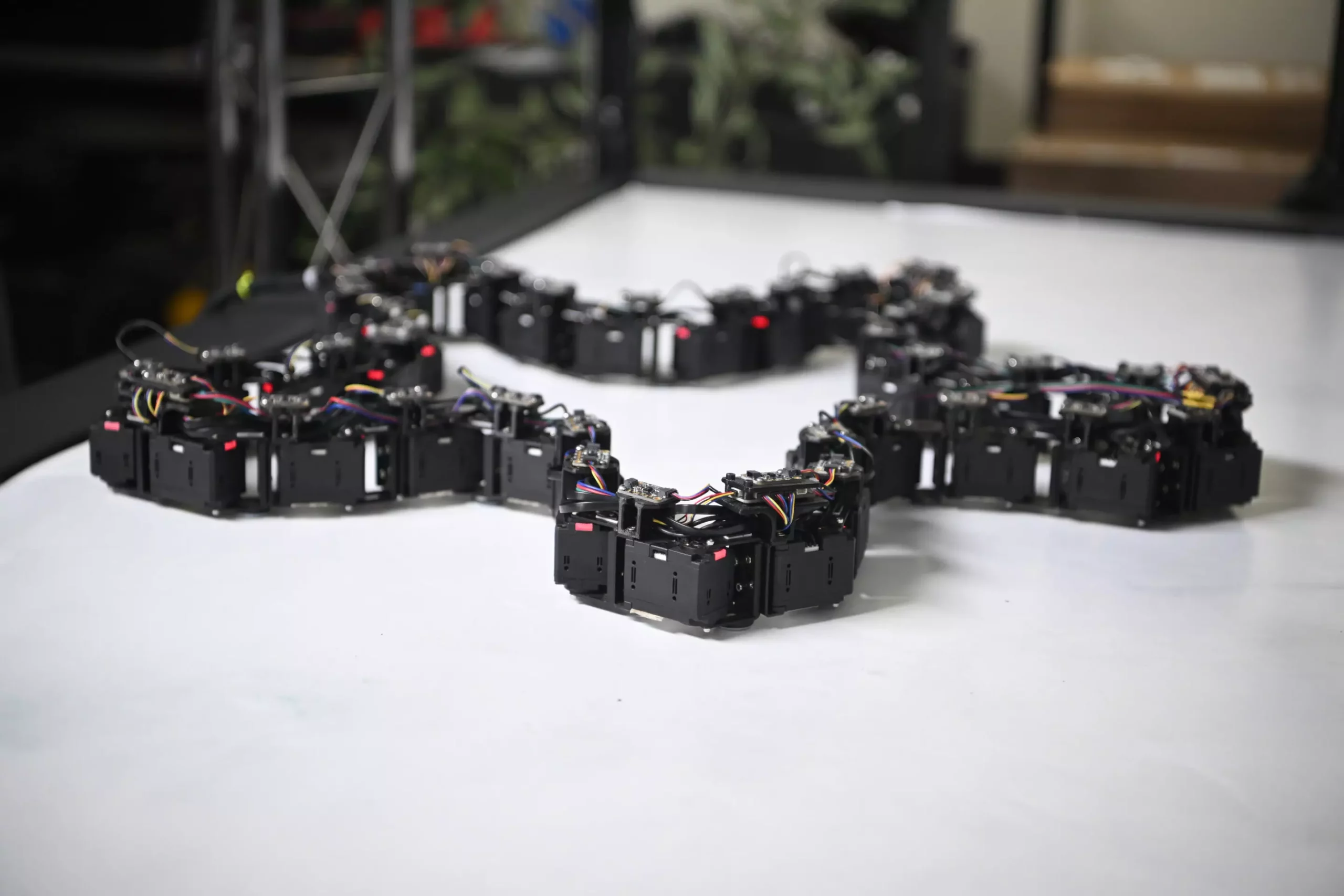At West Virginia University (WVU), a groundbreaking project is underway that challenges traditional notions of robot autonomy. Scientists at the university have created “Loopy,” a pioneering multicellular robot characterized by its unique structure, consisting of a series of interconnected units that operate collectively rather than under rigid preprogrammed directives. This advancement illustrates a significant shift in robotic engineering, pushing boundaries beyond the conventional hierarchies of control and programming. By allowing Loopy to emerge more organically, the research team aims to understand how such systems can reshape robotic technologies to tackle complex real-world challenges.
Loopy’s design draws inspiration from natural phenomena and biological models, most notably swarm behavior and root systems in plants. Each of the 36 interconnected cells within Loopy is capable of individual motion and sensory perception, allowing the robot to interact with its environment and modify its structure in response to external stimuli. This decentralized architecture enables the robot to exhibit lifelike behavior, as seen in ant colonies or plant roots, which navigate their surroundings through collaborative adaptation. Lead researcher Yu Gu emphasizes the transformative potential of this kind of robotics, suggesting that Loopy can effectively mark off hazardous zones—such as oil spills—without direct oversight or programming.
Unlike traditional robots that rely on human designers for every motion and response, Loopy represents a paradigm shift toward decentralized control. This innovation encourages a more dynamic interaction between the robot, its environment, and human operators, effectively democratizing the process of robot behavior and design. The essence of Loopy’s exploration is to evaluate whether such organic problem-solving capabilities can surpass the limitations often seen in conventional robotic systems.
The testing environment set up by Gu and his team is crucial for evaluating Loopy’s adaptability. The lab is equipped with advanced technology, including overhead cameras and thermal imaging systems, to closely monitor how Loopy navigates different scenarios. These tests will involve various conditions, such as diverse surfaces and additional obstacles, enabling researchers to capture Loopy’s instinctive responses to challenges. By observing how the robotic cells collaborate and reshape according to specific circumstances, the research team can delve deeper into the effectiveness of decentralized approaches in robotic functionality.
Crucially, the experiments will not only assess Loopy’s accuracy in marking contaminated areas but also examine how the robot adapts to unforeseen challenges. As Gu notes, traditional robot systems are often “unnatural and brittle,” struggling under conditions that differ from those in their programmed environments. In contrast, Loopy’s design fosters resilience through spontaneous adaptation, allowing for enhanced flexibility when faced with unexpected troubles. The juxtaposition between Loopy’s organic approach and a conventional centralized robotic system will yield invaluable insights into their relative strengths and weaknesses.
The implications of this research extend far beyond mere technical experimentation. By fostering a deeper understanding of how team dynamics in robot cells can lead to complex behaviors, Gu and his team hope to harness these insights for practical applications. Potential uses for Loopy-like robots span diverse fields, from adaptive leak-sealing technologies to interactive art, illustrating the expansive reach of this research. As robots capable of self-organization and resilience emerge from the lab, the boundaries of traditional robotic capabilities are set to expand significantly.
Gu draws an interesting parallel between the mechanics of Loopy and principles in permaculture, emphasizing a collaborative synergy between humans, robots, and the environment. This perspective heralds a shift towards ‘working with’ technology to create adaptable robotic ecosystems that can thrive in unpredictable conditions. The focus on distributed coordination serves as a compelling reminder of nature’s intelligence, a theme that resonates throughout this research.
Loopy’s development at WVU marks a significant milestone in the field of robotics, embodying a shift toward more organic and adaptive systems. The potential for multicellular robots to autonomously navigate complex environments challenges existing structures of control and programming. As the research progresses, the findings may not only redefine the landscape of robotics but also lead to innovative applications that can enhance our interaction with technology. Through this collective intelligence inspired by nature, Loopy represents a compelling glimpse into the future of autonomous robotics, where adaptability and resilience become cornerstones of intelligent design.

